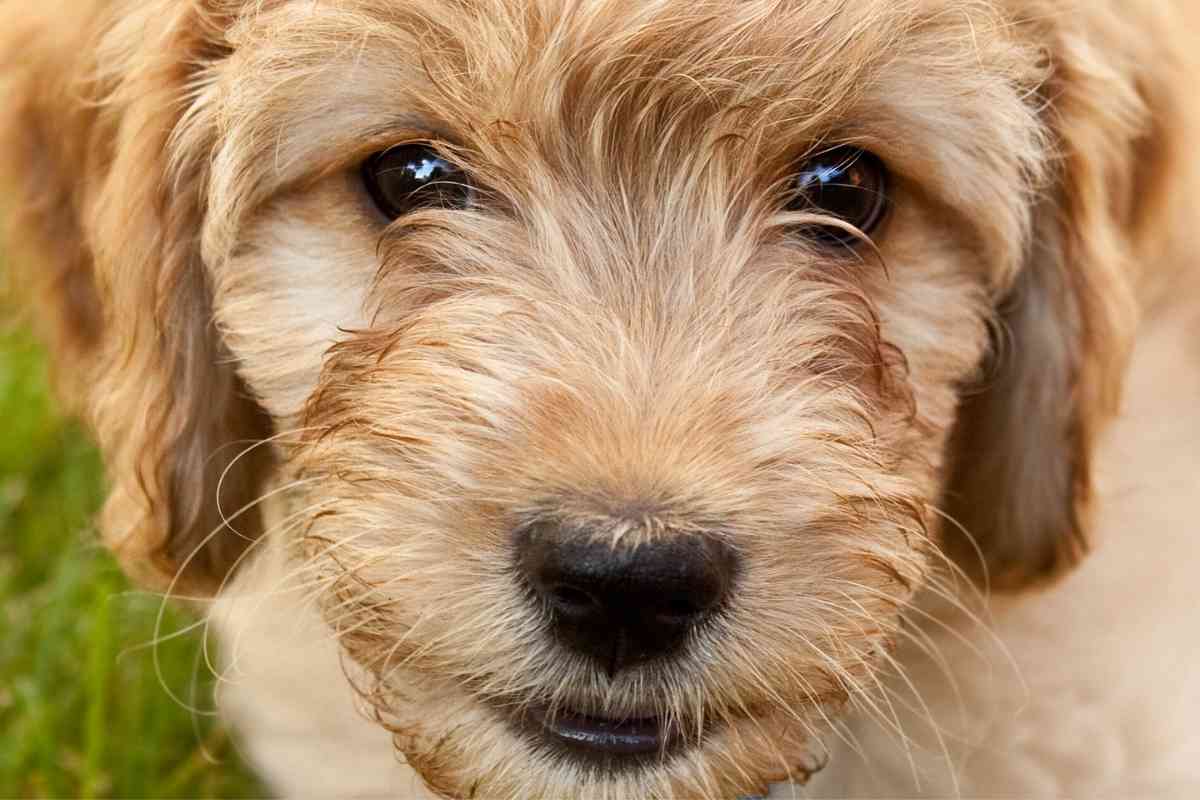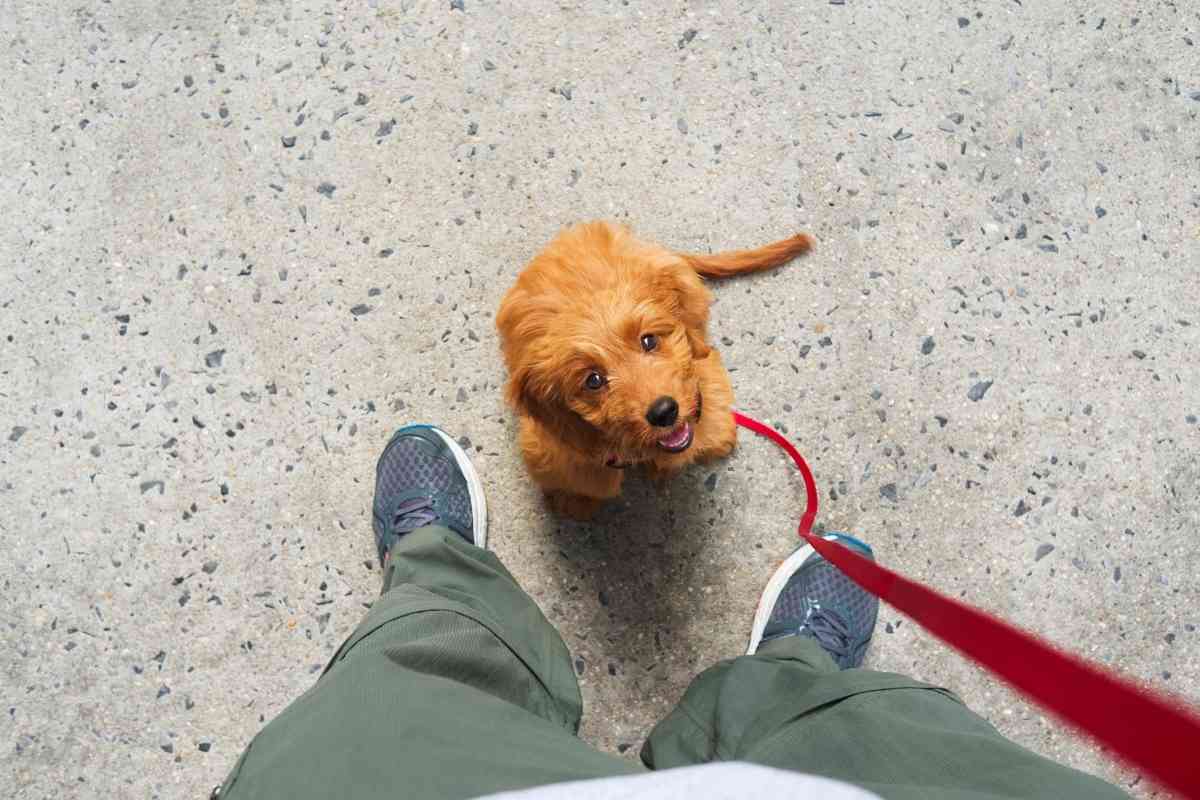What Generation of Mini Goldendoodle is Best?
When it comes to Goldendoodles, no two dogs are going to be the same.
And since they are bred between two purebreds, you can get a lot of variation as the generations go on based on who the parents are at each point.
This can lead to a lot of potential dog owners wondering which generation of the mini Goldendoodle is the best.
What Generation of Mini Goldendoodle is Best?
The best generations of mini Goldendoodles are the F1B, F2B, and F1BB. These will have the most Poodle in them and can provide a coat that does not shed that much. However, personal preference may change this if you want a mini Goldendoodle with more Golden Retriever in it.
Let’s take a look at why those three generations of the Goldendoodle are the best and a look at some of the differences between the different generations to help you make the best decision for your needs.
There are several different generations that you can choose when it comes to picking out the mini Goldendoodle that is best for your needs.
The best generation can often be a matter of opinion, though there are some choices that could give you a better dog than other ones.
If you are looking for a mini Goldendoodle that has some hybrid vigor in them, is non-shedding, and hypoallergenic, then the following generations are going to be the best to help you:
F1B mini Goldendoodle
These will be 75% Poodle and 25% Golden Retriever so you are able to get lots of vigor in them and not as much shedding.
F2B mini Goldendoodle
These will be 62.5% Poodle and 37.5% Golden Retriever. These have a bit more of the Golden Retriever in them, but they still have enough Poodle to prevent the shedding and allergies.
F1BB mini Goldendoodle
These have the highest amount of Poodle in them at 87.5% and then 12.5% of the Golden Retriever.
They will have curly coats that do not shed much and lots of the Poodle temperament.
If you are not as concerned about the dog not shedding or them being hypoallergenic, then you are more likely to choose based on the coat color.
If you would like a straight coat or flat Goldendoodle that could potentially shed, then you will want to go with either the F1 or F2 mini Goldendoodle.
Keep in mind here that the more of the Poodle genetics that you are able to add into the Goldendoodle, the more hypoallergenic and non-shedding the dog will be.
It does have a lot to do with your own personal preferences too.

What are the Main Types of Mini Goldendoodles?
Since the right type of mini Goldendoodle is going to depend highly on personal preference, it is a good idea to understand the different generations of these Goldendoodles to help you pick out the right one.
There are a few different generations that you can go with depending on what you like the most.
Some of the most common include:
F1 Mini Goldendoodle
This one is going to be half Poodle and half Golden Retriever.
This is the first generation of the mini Goldendoodle that will have parents who are purebred Poodle and Goldendoodle.
Many of the breeders offering the Goldendoodle will use this type of cross because they are easier to breed compared to some of the others, though the genes for this generation can vary quite a bit.
For example, some of the F1 mini Goldendoodles will have a coat that sheds quite a bit and others are non-shedding.
Some will be smooth like the Golden Retriever and others will be curly.
In terms of genetics, this one often has the best health benefits, which is their hybrid vigor.
This shows that this initial cross between the two parents is going to be the healthiest out of any other types of crossings.
If you get a dog that is an F1, then you will have a healthy dog.
F1B Mini Goldendoodle
This version of the Goldendoodle is 75% Poodle and 25% Golden Retriever.
To get them, you will take the F1 mini Goldendoodle and breed back with a purebred Poodle again.
You can do this with the Golden Retriever as well, but most will use the Poodle because it helps to make the hair non-shedding better than crossing with the Golden Retriever.
This is the breed that is preferred the most for those who need a dog that will be mostly hypoallergenic with a coat that does not shed.
These dogs may have a wavy or curly coat and would be a great choice for those with slight pet allergies around the home.
You will need to do some grooming to keep them in good shape.
F1BB Mini Goldendoodle
This one will have quite a bit of the Poodle in them, with 87.5% of their genetics coming from the poodle and just 12.5% from the Golden Retriever.
To get this generation, you will need to have a cross between the F1B Goldendoodle and a purebred Poodle or Golden Retriever.
It is usually done with the Poodle in order to come up with a hypoallergenic coat.
This Goldendoodle is going to be the most non-shedding and hypoallergenic of all the mini Goldendoodles.
Because there is so much of the Poodle in them, this means that the dog is likely to have a coat that is very curly.
You will need to groom them well.
Since this is the third generation of the Goldendoodle, be aware that they have less of the hybrid vigor than previous generations.
F2 Mini Goldendoodle
This one is still 50% of both the Poodle and the Golden Retriever.
The only difference is that the mix is not between two purebred dogs, but between two F1 Goldendoodles.
Since there is half of each type of parent in them, there is not a lot of predictability in terms of the shedding, coat hair, and coat type.
F2B Mini Goldendoodle
This dog is a Golden Retriever and is a mix between the F1 and F1B mini Goldendoodle.
This one still has a lot of the Poodle genes in them, which will result in a coat that is pretty wavy and curly in the process.
This means that they are less likely to shed and will be considered hypoallergenic.
This is the area where the breeder is likely to call the dog a multi-generational mini Goldendoodle as they will be the third generation down.
Be careful that both parents are healthy with good genetics because issues can start to show up in this generation if caution is not used.
F2BB Mini Goldendoodle
For this Poodle and 18.75% Golden Retriever.
To get this one, you will have an F2B mini Goldendoodle mixed with a purebred Poodle.
This is the most hypoallergenic and non-shedding option out there because they have so much of the Poodle in them.
In fact, only one of the generations has more Poodle in them, and that is not by that much.
This type of Goldendoodle is likely to have the curly coat type that you must
This is a fourth generation of the Goldendoodle by the time you get this far so they will be considered a multi-generational dog as well.

F3 Mini Goldendoodle
This generation Goldendoodle is going to be created with an F1B Goldendoodle and another F1B Doodle.
You can also breed an F3 mini Goldendoodle from two F2 mini Goldendoodles.
There is quite a bit of the Poodle in this dog, making them a good choice for those with all the pet allergies.
The coat of this breed will vary, but be ready to take good care of it.
This is a multi-generational Goldendoodle and their hybrid vigor may not be as high as some would like.
As you can see, there are a lot of varieties that happen when.
You are dealing with the Goldendoodle based on the way they are bred and who their parents are.
Picking a reputable breeder who helps to keep track of all the breeding and provides you with a good dog you can trust in, will make the most difference.
When the dog is bred right, you can get the perfect type of Goldendoodle for all your needs, without as much worry about the genetic issues that may show up too.
Choosing the Right Goldendoodle for You
With all the different generations of Goldendoodles out there, it is important to make sure you can find the right one.
With a bit of shopping around and finding the Goldendoodle who will fit your needs and has the features and style that you want will make all the difference.
Whether you go with one of the generations that is considered the best or not, the mini Goldendoodle is going to be a great pet to add to your home.